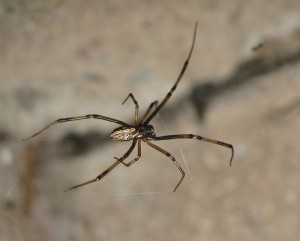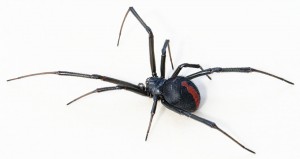Background
An organism preferentially choosing a mate by determining their quality is a mechanism that exists within many species. We usually associate selection as females choosing their mates from a large number of potential suitors, but the reverse is also relatively common. As long as there exists a way to accurately determine the quality of a mate, mating preferences will develop. In particular, mating preference for males choosing females exists when the number of times a male can mate is constrained and the fitness cost for being choosy about a mate is low.
One study was interested in investigating male mating preferences is black widow spiders. Pervious studies have identified that males from one species of black widow spider, L. Hesperus, are able to determine the quality of females based on a combination of their silk pheromones and visual cues. Quality is based on how well females are fed, which often directly relates to their level of fertility. Black widow spiders provide a remarkable case of mating preference because poorly fed females will often cannibalize their mates during the mating process. However, the time of cannibalization depends on the species of spider; some will be eaten during courtship and others will be eaten after fertilization is complete. This is an interesting discrepancy because males who are consumed before mating completely fail on an evolutionary level, but males that successfully transfer sperm before dying still pass their genetic material to their offspring.
What was their experiment?
This study was interested in expanding on previous black widow mate preference research by isolating the chemical cues from female silk pheromones and testing to see if there was a difference in male preference between two black widow spider species with different cannibalization habits. The two species were the previously tested L. Hesperus, who are generally cannibalized before sperm transfer, and an untested species, L. Hasselti, who are cannibalized after sperm transfer. The researchers created two experimental groups of females, one that was starved and one that was well fed, and collected silk samples after a few weeks. Males were placed in a small container with the silk and tested for their movement activity inside the space. The researchers also observed the amount of silk produced from each female in order to determine a potential correlation with health and fertility.
What were their hypotheses?
The researchers had two hypotheses for their experiment. One was that the only consideration when choosing a mate is to avoid being eaten before sperm is transferred. If true, they expected to see preference in L. Hesperus for selecting well-fed females, but not in L. Hasselti. Their other hypothesis was that males from both species select for more fertile females in general and disregard the risk of cannibalization. In this case, they expected to see a preference for the well-fed females within both species. They also expected to find that the females that produced more silk would be generally preferred.
What did they learn?
The researchers found that for both species, the amount of silk produced by a female was not correlated to preference for that female. This was a surprising result, but it suggests that pheromones within the silk must be independent to the amount of silk produced. They also found that L. Hesperus did exhibit a preference for well-fed females, but that L. Hasselti showed no preference. These findings support the researchers’ first hypothesis that selection, at least for L. Hesperus, is based on avoiding cannibalism before sperm can be transferred.
The findings from this study create an additional question for L. Hasselti, which is why they don’t prefer females with higher fertility levels. It is possible that females either don’t produce a change in their silk pheromones based on diet or that males don’t factor it into their preference because their genes will be passed on even if they are cannibalized by a hungry female. It may also be too costly for males of this species to pass up on a mate if the abundance of females is too low to merit being selective. Additionally, preference for females may simply be towards virgins, reducing male competition with other sperm that may already be in the female’s body. Regardless of the selective pressures within L. Hasselti, this study provides very interesting results that support male black widow spiders’ ability to determine preference through pheromones alone. Future studies should look into how preference changes in other species based on pheromone use and cannibalization habits.
References:
Baruffaldi, L. Andrade, M. C. 2015. Contact pheromones mediate male preference in black widow spiders: avoidance of hungry sexual cannibals? Animal Behaviour. 102: 25-32.



